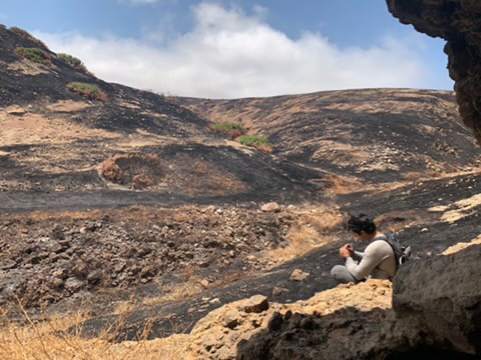Part of a series of articles titled Using Science to Preserve the Past.
Article
Compliance Inspires Science on Santa Cruz Island

NPS
In May of 2020, the Scorpion Fire burned approximately 1,395 acres of land on Channel Islands National Park’s eastern Santa Cruz Island. Burned Area Emergency Response (BAER) funding supported environmental compliance, including an inventory of burned archeological sites by park staff and Chumash tribal partners. The plan was to assess 34 known archeological sites, but during fieldwork the team discovered and documented an amazing 48 new archeological sites!
With these new discoveries, the project became more than just emergency compliance. Although emergency funding supported site inventory and stabilization, it did not support research costs such has radiocarbon dating. Support from the Southern California Research Learning Center and other collaborators elevated the project from compliance to one of expanded science, and the mission to find what had yet to be discovered was launched. The additional funding allowed for collection and analysis of radiocarbon samples from 18 sites, including many that are vulnerable to erosion/sea cliff retreat, worsened by climate change and post-fire vegetation loss.
The radiocarbon samples consisted of marine shells from archeological sites. Shellfish, which are an important source of food and raw material, are common in Chumash sites. Using radiocarbon dating, a method to determine the age of an organic object, researchers determined the sites were occupied between 6,049 BP (4099 BC) and 269 BP (AD 1681). These dates provide additional information on Chumash settlement and mobility patterns, illustrating where and how 300 generations of Island Chumash procured food and raw materials on eastern Santa Cruz Island. Results from this project will be presented at the 2021 Annual Meeting for the Society of American Archaeology.
Additional thanks to collaborators, including representatives from the Santa Ynez Band of Chumash Indians and the Barbareño/Ventureño Band of Mission Indians, as well as professors and graduate students from CSUCI, UCSB, and Norco College.
Last updated: February 2, 2023
